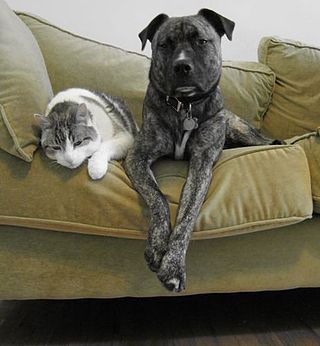
A pet, or companion animal, is an animal kept primarily for a person's company or entertainment rather than as a working animal, livestock, or a laboratory animal. Popular pets are often considered to have attractive/cute appearances, intelligence, and relatable personalities, but some pets may be taken in on an altruistic basis and accepted by the owner regardless of these characteristics.

Commensalism is a long-term biological interaction (symbiosis) in which members of one species gain benefits while those of the other species neither benefit nor are harmed. This is in contrast with mutualism, in which both organisms benefit from each other; amensalism, where one is harmed while the other is unaffected; and parasitism, where one is harmed and the other benefits.

The turkey is a large bird in the genus Meleagris, native to North America. There are two extant turkey species: the wild turkey of eastern and central North America and the ocellated turkey of the Yucatán Peninsula in Mexico. Males of both turkey species have a distinctive fleshy wattle, called a snood, that hangs from the top of the beak. They are among the largest birds in their ranges. As with many large ground-feeding birds, the male is bigger and much more colorful than the female.

Domestication is a multi-generational mutualistic relationship in which an animal species, such as humans or leafcutter ants, takes over control and care of another species, such as sheep or fungi, to obtain from them a steady supply of resources, such as meat, milk, or labor. The process is gradual and geographically diffuse, based on trial and error. Domestication affected genes for behavior in animals, making them less aggressive. In plants, domestication affected genes for morphology, such as increasing seed size and stopping the shattering of cereal seedheads. Such changes both make domesticated organisms easier to handle and reduce their ability to survive in the wild.

A coydog is a canid hybrid resulting from a mating between a male coyote and a female dog. Hybrids of both sexes are fertile and can be successfully bred through four generations. Similarly, a dogote is a hybrid with a dog father and a coyote mother.
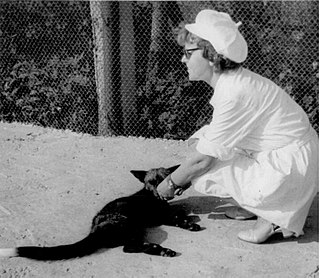
The domesticated silver fox is a form of the silver fox that has been to some extent domesticated under laboratory conditions. The silver fox is a melanistic form of the wild red fox. Domesticated silver foxes are the result of an experiment designed to demonstrate the power of selective breeding to transform species, as described by Charles Darwin in On the Origin of Species. The experiment at the Institute of Cytology and Genetics in Novosibirsk, Russia explored whether selection for behaviour rather than morphology may have been the process that had produced dogs from wolves, by recording the changes in foxes when in each generation only the most tame foxes were allowed to breed. Many of the descendant foxes became both tamer and more dog-like in morphology, including displaying mottled- or spotted-coloured fur.

The domestication of vertebrates is the mutual relationship between vertebrate animals including birds and mammals, and the humans who have influence on their care and reproduction.

Captive breeding, also known as captive propagation, is the process of keeping plants or animals in controlled environments, such as wildlife reserves, zoos, botanic gardens, and other conservation facilities. It is sometimes employed to help species that are being threatened by the effects of human activities such as climate change, habitat loss, fragmentation, overhunting or fishing, pollution, predation, disease, and parasitism.

Animal captivity is the confinement of domestic and wild animals. More specifically, animals that are held by humans and prevented from escaping are said to be in captivity. The term animal captivity is usually applied to wild animals that are held in confinement, but this term may also be used generally to describe the keeping of domesticated animals such as livestock or pets. This may include, for example, animals in farms, private homes, zoos, and laboratories. Animal captivity may be categorized according to the particular motives, objectives, and conditions of the confinement.

Behavioral enrichment is an animal husbandry principle that seeks to enhance the quality of captive animal care by identifying and providing the environmental stimuli necessary for optimal psychological and physiological well-being. Enrichment can either be active or passive, depending on whether it requires direct contact between the animal and the enrichment. A variety of enrichment techniques are used to create desired outcomes similar to an animal's individual and species' history. Each of the techniques used is intended to stimulate the animal's senses similarly to how they would be activated in the wild. Provided enrichment may be seen in the form of auditory, olfactory, habitat factors, food, research projects, training, and objects.

Dog behavior is the internally coordinated responses of individuals or groups of domestic dogs to internal and external stimuli. It has been shaped by millennia of contact with humans and their lifestyles. As a result of this physical and social evolution, dogs have acquired the ability to understand and communicate with humans. Behavioral scientists have uncovered a wide range of social-cognitive abilities in domestic dogs.
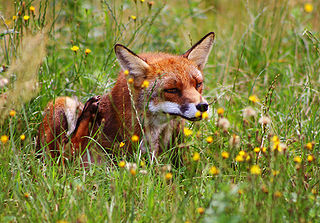
Wildness, in its literal sense, is the quality of being wild or untamed. Beyond this, it has been defined as a quality produced in nature and that which is not domesticated. More recently, it has been defined as "a quality of interactive processing between organism and nature where the realities of base natures are met, allowing the construction of durable systems" and "the autonomous ecological influences of nonhuman organisms."

Human–wildlife conflict (HWC) refers to the negative interactions between humans and wild animals, with undesirable consequences both for people and their resources on the one hand, and wildlife and their habitats on the other. HWC, caused by competition for natural resources between human and wildlife, influences human food security and the well-being of both humans and other animals. In many regions, the number of these conflicts has increased in recent decades as a result of human population growth and the transformation of land use.

Valerius Geist was a German-Canadian biologist and a professor emeritus in the Faculty of Environmental Design at the University of Calgary. He was a specialist on the biology, behavior, and social dynamics of North American large mammals, and well respected on his views of Neanderthal people and behavior.
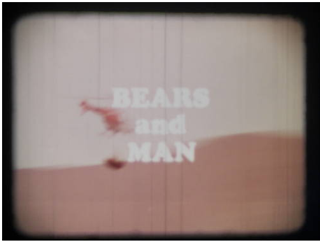
Bears and Man is a 1978 Canadian educational film by Bill Schmalz. It was produced by the National Film Board of Canada (NFB) and Parks Canada. The film documents human-bear interactions in Canada's National Parks. It was narrated by Chief Dan George and Patricia Best, and was co-written and edited by Adbusters founder Kalle Lasn.
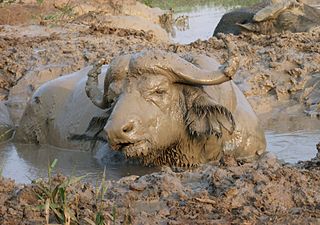
Wallowing in animals is comfort behaviour during which an animal rolls about or lies in mud, water or snow. Some definitions include rolling about in dust, however, in ethology this is usually referred to as dust bathing. Wallowing is often combined with other behaviours to fulfil its purpose; for example, elephants will often blow dirt over themselves after wallowing to create a thicker "coating", or pigs will allow the mud to dry before rubbing themselves on a tree or rock to remove ectoparasites stuck in the mud.
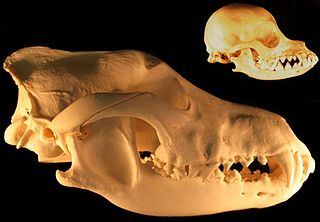
Domestication syndrome refers to two sets of phenotypic traits that are common to either domesticated plants or domesticated animals.
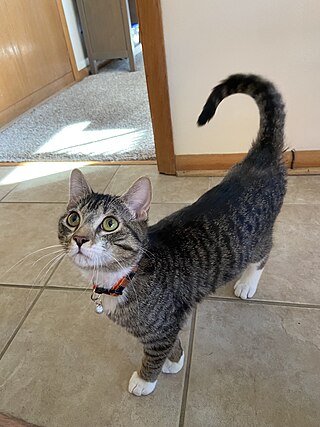
The domestic cat originated from Near-Eastern and Egyptian populations of the African wildcat, Felis sylvestris lybica. The family Felidae, to which all living feline species belong, is theorized to have arisen about ten to eleven million years ago and is divided into eight major phylogenetic lineages. The Felis lineage in particular is the lineage to which the domestic cat belongs.
Wild ancestors are the original species from which domesticated plants and animals are derived. Examples include dogs which are derived from wolves and flax which is derived from Linum bienne. In most cases the wild ancestor species still exists, but some domesticated species, such as camels, have no surviving wild relatives. In many cases there is considerable debate in the scientific community about the identity of the wild ancestor or ancestors, as the process of domestication involves natural selection, artificial selection, and hybridization.


















